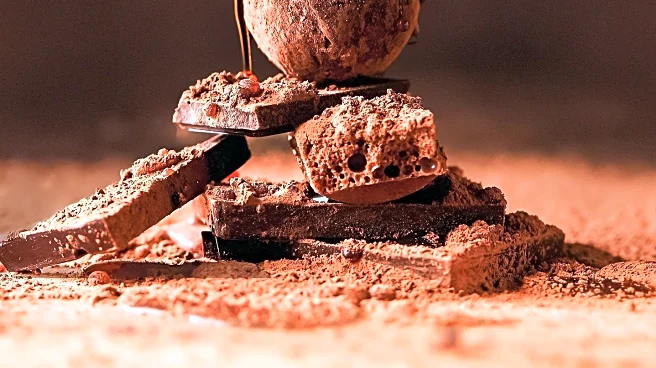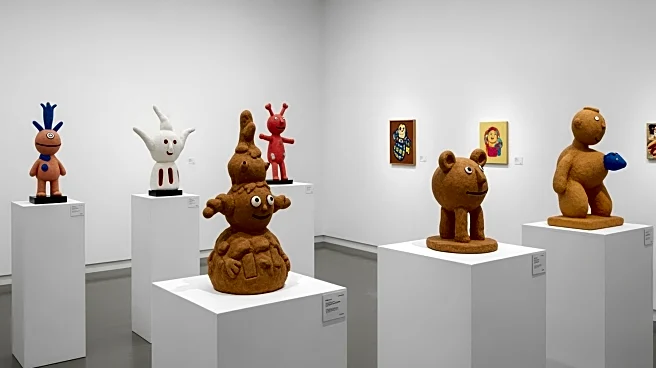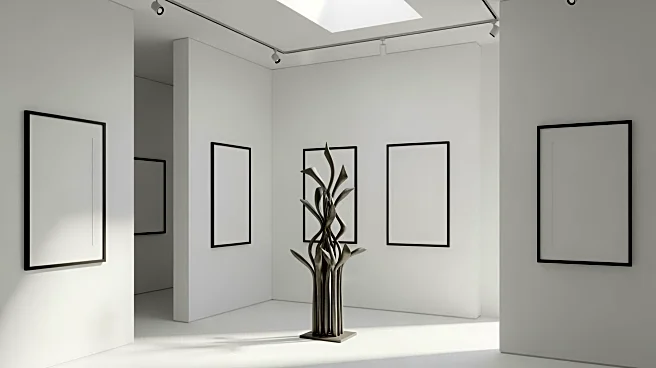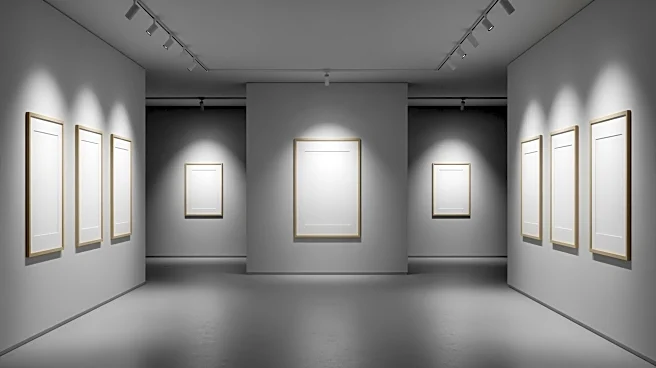What's Happening?
The Art Newspaper discusses the use of chocolate as an art material, exploring its complex cultural and economic implications. Chocolate, historically linked to colonialism, has been used by artists like
Anya Gallaccio to create installations that challenge perceptions of luxury and desire. Gallaccio's work often incorporates natural materials, emphasizing impermanence and decay. Her chocolate installations, such as 'Stroke,' invite viewers to engage with the material's sensory qualities, while also reflecting on issues of value and deprivation. The article highlights the historical context of chocolate consumption, noting its association with class and gender dynamics.
Why It's Important?
The use of chocolate in art raises important questions about cultural heritage, economic inequality, and consumerism. By transforming chocolate into an art medium, artists like Gallaccio challenge traditional notions of value and luxury, prompting viewers to reconsider their relationship with everyday materials. This approach also highlights the ethical considerations surrounding chocolate production, including issues of fair trade and sustainability. As artists continue to explore unconventional materials, the art world may see a shift towards more socially conscious and environmentally aware practices, influencing both artistic expression and consumer behavior.
What's Next?
The exploration of chocolate as an art material may inspire further artistic experimentation with food and other unconventional materials. As awareness of ethical and environmental issues grows, artists may increasingly use their work to address these concerns, potentially leading to collaborations with organizations focused on sustainability and social justice. Galleries and museums may also expand their exhibitions to include more works that challenge traditional boundaries and engage with pressing global issues, fostering dialogue and reflection among audiences.
Beyond the Headlines
The use of chocolate in art reflects broader cultural shifts towards questioning consumer habits and the impact of colonial histories. By engaging with these themes, artists contribute to ongoing discussions about identity, power, and responsibility. The sensory nature of chocolate installations also invites viewers to experience art in new ways, emphasizing the importance of multisensory engagement in contemporary art practices. As artists continue to push boundaries, the art world may see a growing emphasis on works that provoke thought and inspire change.











